#Rumex acetosa
Explore tagged Tumblr posts
Text
Coltivazione dell'acetosa (Rumex acetosa)
Clima: qualsiasiTerreno: medio impasto, fertile e frescoEsposizione: soleggiataMoltiplicazione: seme o suddivisione cespiSemina: primavera o estateDistanza tra le file: 30 cmCiclo colturale: perenneRaccolta: dalla primavera all’autunno L’acetosa è molto rustica e frugale; cresce ovunque e non ha particolari esigenze colturale. Di solito si riproduce per seme che si interra direttamente a dimora,…

View On WordPress
0 notes
Text

Wood sorrel soup with green peppercorn and mint
The wood sorrels—sometimes called sourgrasses—are a group of extremely widely distributed edible weeds in the genus Oxalis. As their name suggests, wood sorrels have a distinctly tart flavor due to the presence of oxalic acid. The seed pods of the wood sorrels are crisp and quite sour, and are therefore sometimes called fairy pickles. Wood sorrel is a commonly foraged green which grows well in disturbed areas, woodland, lawns, and gardens; it may be used as a pot herb or a salad green, or brewed into tea.
This recipe is for a blended soup similar to schav (Yiddish): an eastern European soup made with common sorrel (Rumex acetosa), vegetables, and smetana (sour cream)—and to potage crème d'oseille: a French soup made with sorrel or other sour, foraged greens; broth; eggs; and cream. In my version of this soup, the bright, lemony sourness of wood sorrel is deepened with garlic, tempered with a non-dairy milk, and complemented by the fresh, earthy, citrusy notes of green peppercorn. A garnish of chiffonaded mint or green onion adds some herbacious sharpness that plays well against the fresh wood sorrel.
Recipe under the cut!
Patreon | Paypal | Venmo
Ingredients:
50g (1 cup packed) yellow wood sorrel
1 small sweet onion
3 cloves garlic, crushed
Margarine, to fry
Salt to taste
1 tsp ground green peppercorns
2 cups vegetable stock
1/3 to 1/2 cup non-dairy milk, to taste
1 Tbsp flour
Mint or green onion, to garnish
Besides common yellow wood sorrel (Oxalis stricta), procumbent yellow sorrel (O. corniculata), or slender yellow wood sorrel (O. dillenii), will also work.
All three species have leaves which are alternate (one leaf per node), trifoliate (three leaflets per leaf), and petiolate (attached to the stem by a leafstalk, rather than directly); have heart-shaped leaflets; and have yellow, five-petalled flowers. Leaflets open in the sun and close (folding downwards) at night.
O. stricta plants grow upright when very young, but are afterwards recumbent; each plant has only one root, so the stems are not truly creeping (sending down new roots at the nodes). Stems may have small hairs spreading away from the center. Flowers appear in branched clusters, usually from 5 to 7 per inflorescence. Pedicels (seed pods) are erect.

O. stricta roots once; if young and light, it is upright. If mature and heavy enough, it will lie recumbent along the rest of its length without rooting again.
O. corniculata plants are prostrate, spreading via overground stolons which root into the ground again at the nodes. Pedicels are deflexed (hanging down) or horizontal.

O. corniculata spreads along the ground; if you try to pull up a mature plant, you will note it is rooted at more than one point (if soil is available).
O. dillenii is sometimes considered a type of O. stricta. Plants are erect and may reach over a foot in height. Flowers usually appear in 2s, but there may be as many as 6 per infloresence. Stems have appressed (lying flat against the stem surface) hairs. Pedicels are reflexed (bent).

O. dillenii, upright with hairy stems and seed pods whose peduncles have a sharp bend in them, like an elbow. Leaves sometimes slightly reddish.
Instructions:
Wash wood sorrel in a bowl of water, then draw the plants out to allow dirt to sink to the bottom. Include leaves, stems, seed pods, and flowers.
In a large soup pot, melt margarine on medium-high. Fry onion, garlic, a pinch of salt, and half the green pepper until the onion is golden brown.
Add sorrel and heat until thoroughly wilted.
Add stock and simmer 10 minutes.
Whisk flour into 1/3 cup non-dairy milk; add the mixture to the pot and whisk. Taste and add another splash of milk if the soup remains too sour.
Add remaining green pepper and salt to taste. Simmer another 3 minutes or so.
Garnish. Serve hot or cold.
157 notes
·
View notes
Text
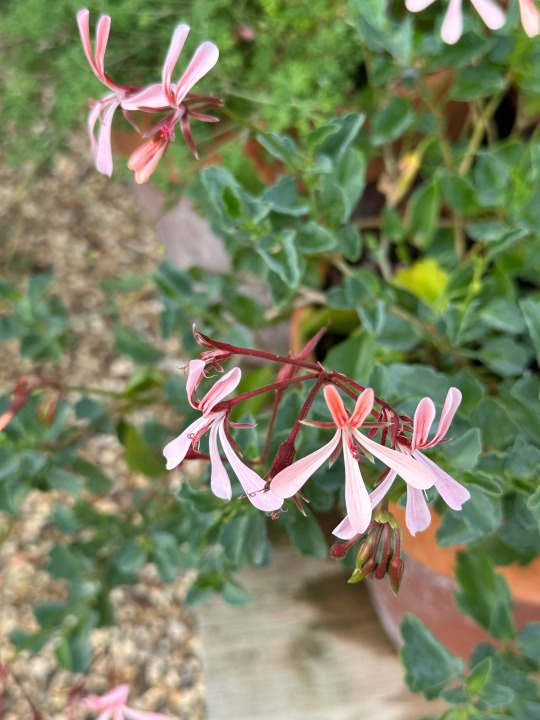
Plant of the Day
Thursday 8 February 2024
The sour‑tasting young leaves of Pelargonium acetosum (sorrel cranesbill, sorrel-leaved pelargonium) are eaten in South Africa in the same way as tart flavoured Rumex acetosa (sorrel). The plant is drought tolerant but needs to be kept frost free but cool in the winter with good light.
Jill Raggett
#pelargonium#sorrel cranesbill#sorrel-leaved pelargonium#plants#horticulture#garden#containers#evergreen#perennial#tender#Beth Chatto Garden
54 notes
·
View notes
Text
#2477 - Oxalis sp.


Possibly Oxalis magellanica, which is native to Aotearoa and South America (magellenica as in Straits of Magellan), but while NZ has some native Oxalis species, it has considerably more that aren't. Including Oxalis tuberosa, a staple crop in the Andes and highly popular in New Zealand where they're called yams.
There are some 550 species of Oxalis worldwide, most of them in tropical Brazil, Mexico, and South Africa. The common name wood sorrels refers to their acidic taste (from Oxalic acid) reminiscent of the true sorrel (Rumex acetosa), which is not closely related. Other common names include as false shamrocks, and sourgrasses.
Hāwera, Taranaki, New Zealand
2 notes
·
View notes
Text

rumex acetosa・june 16, 2017
9 notes
·
View notes
Text
Common sorrel (Rumex acetosa) wildflower photo I took 19/07/2023, Askham Bog, North Yorkshire, UK
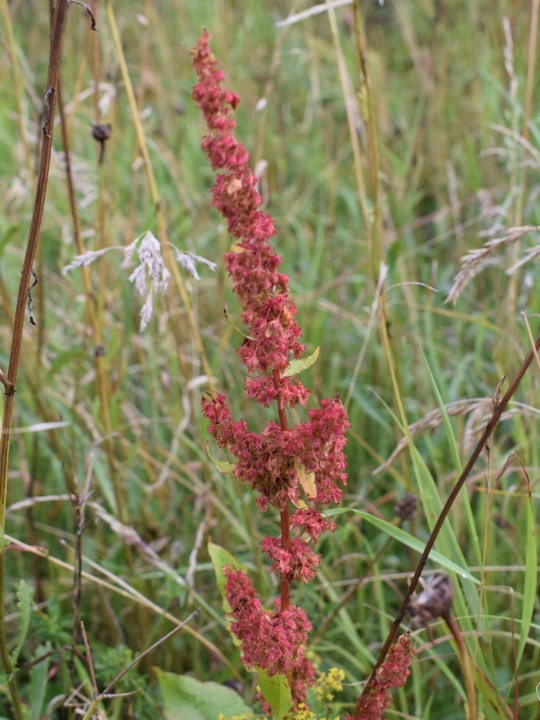
#nature#nature photography#british nature#wild#common sorrel#sorrel#Rumex#dock#docks#red#wildflower photography#wildflower#wildflora#wildflowers#wild flower plants#wild flowers#flora#flower#flowers#botany#botanical#flower photography#plant photography#plant#plants#wild plant#wild plants#red flower#red flowers#plantblr
2 notes
·
View notes
Text

[CONTEST CLOSED]
UPDATE: 15th July 2023 The contest is closed, however here are the correct answers: 1 - mullein (Verbascum) 2 - stawberry leaf 3 - yarrow (Achillea millefolium) 4 - sorrel (Rumex acetosa) 5 - poppy -------------------------------------------------------------------------
Hey, hey hey!!! I'm opening a contest for you guys :) So what's the deal? You have to guess the plants correctly in this page so the 3 of you can "win" a free headshot of your OC. Sounds good, doesn't it? Let's take a closer look on the rules/info:
* Who can join? - Anybody! This contest is open for everyone who wants to try it.
* What's the deal/rules? - The main thing of this contest is to guess the names of the plants drawn in this comic page (they have numbers). Don't worry - I know my drawings are a lot silly so later in this post I'll give you few hints that will help you guess the plants' names ;) ---> WRITTING NAMES OF THE PLANTS: - You can write the plant's name in english, however since I am not a native english speaker, I'd preffer if you could also add the latin name so both sides know what plant we are talking about (example: daisy; Bellis - you can write only the genus in latin, but feel free to add the second name if you feel for it.... daisy isn't there, folks :D ) ---> WHERE TO WRITE ANSWERS? - You can simply comment bellow this post or if you're shy or don't want others to see your anwer, you can message me personally via note/DM ---> HOW DO I WIN? - I put some very easy plants into the page, however two of them aren't that much known SO if you guess correctly 3 plants out of 5, you are the winner :) - min. 3 correctly guessed plants' names --> you win - under 3 correct anwers --> you lose - Please write the plant's number and to the number your aswer
* What's the prize? - As a reward you get one free drawn headshot of your original character or your sona (or whatever you like)! - You can also later ask me if you'd like the drawing in traditional or digital style (for expectations see my gallery) - A little reminder I'm quite bussy with things outside the world so it might take me a while to finish your prizes, please be patient!
* When will the contest end? - This contest ends on July 15th at 00:00 (CET) - I'll let you know in this post when the contests ended and who won
And thta's is! Have fun!
** BONUS PART: PROMPTER - I am nice and I'll give you some more info to better guess these nasty plants :) No. 1 - a biennial herb which can be found literally anywhere, but it prefers dry and sunny places - it's leaves are covered with silver "hair", it's soft to touch - the leaves are used as a poultice on forehead of a sick person who suffers of high temperature - typical plant has yellow flowers that appear into an inflorescence No. 2 - a plant that is very favorite among humans, especially for it's red fruits - usually known for it's red fruit which is sweet - a tea made of the plant's leaves are good for calming your mind No. 3 - perrenial plant, now very often found in lawns - white flowers are the most typical colour for this plant, however you can spot even pink ones - the foliage has typical shape, it's "ribbed" - tea made of this plant is good for detoxification and helps to stop bleeding No. 4 - perrenial plant, usually found on dry and sunny medows - the flowers are very tiny, you can spot the plant from a distance thanks to its red/dark pink flowers that look like little beads - only edible plant of this genus, the leaves have sour taste - Thornclan cats use these as travelling herbs :) No. 5 - juice of this non-ripe fruit has soporific effects - ripe fruit pours out lots of tiny seeds, humans make cakes out of these - the wild plant has usually red flowers, children make dolls out of these (not sure if your culture does) - when you damage the plant, it pours a "milk"
Hopefully there aren't any grammatical mistakes ^^;
---------------------------------------------------------------------
(links will lead ya to DA, no worries)
Next: xXx
Previous: What's happened? --> [link]
First: BEGIN YOUR READING
Artwork & Story & Characters © MrsFalcon (FalconFeatherTheCat) (me) Warriors © Erin Hunter
#my art#comic#my comic#ocs#oc#my ocs#cats#cat#she cat#emberheart#bluepool#iwm#chapter 2#page 39#herbs#contest#digital drawing#digital art#digital painting#digital#painting#drawing#warriorcats#warrior cats oc#warrior cats fan#i want more
2 notes
·
View notes
Text
helloooooo :-3
first of all , this blog is Exactly what it says on the tin . i will pretty much exclusively be posting about fandom OCs/sonas and respective selfships . if you do not care for this type of bullshit please feel free to leave i'm not holding you at gunpoint to witness my insanity
anyway so now that is out of the way ! good day you may call me onion ! i use they/it/he , i'm 18+ , i'm grey-aro and bisexual but as will probably be abundantly clear that's with a notable male preference
my current favourite blorbo is melli from legends arceus !!
(but i am also very fond of rouxls kaard so if this blog ever makes an abrupt character change it'll probably be me going back to thinking about him)
please dni if you selfship with either of those two . nothing against you but i'd rather not see it
info about rumex (the OC i ship with melli) can be found in this post
posts that are only OC related will be tagged with 'acetosa character'
posts that are ship related will be tagged with 'acetosa sap'
text posts will be tagged with 'acetosa textpost'
reblogs will not have a specific tag
(i feel like onion tags would be someone elses already)
look at my silliness if you want ! or don't if you don't want to idk i'm not forcing you !
2 notes
·
View notes
Text
huh, I suppose this ought to also work with sorrel-sorrel, as in Rumex acetosa, of which there is an excess in my garden? Since I think the oxalis sorrels are so-named for the similar flavour. (I've always thought it tastes like gooseberries, myself.)
Day before yesterday I impulsively nibbled a bit of my mountain mint plant and after 3 seconds had to spit it out because my mouth flooded with intense, burning minty cold much greater than normal spearmint
7K notes
·
View notes
Text
L'oseille sauvage : Reconnaître et cuisiner
Bonjour chers amis , voici une nouvelle plante découverte ! L'oseille
À travers cet article, L’oseille sauvage : Reconnaître et cuisiner RUMEX ACETOSA, vous découvrirez les secrets de l’identification de l’oseille, apprendrez comment la cueillir et la conserver, et explorerez ses nombreuses utilisations culinaires et médicinales. Préparez-vous à être surpris par la polyvalence et les vertus de l’oseille, un super aliment souvent méconnu. COMMENT RECONNAÎTRE…

View On WordPress
0 notes
Text
0 notes
Text
What Are The Best Leafy Greens For Fall?
Growing leafy greens in the fall can be a great way to extend your harvest and enjoy fresh, nutritious produce well into the cooler months. Here are some of the best leafy greens to consider planting in the fall: Lettuce (Lactuca sativa): Varieties like 'Butterhead,' 'Romaine,' and 'Red Leaf' are excellent choices for fall. They're quick to mature and can be harvested as baby greens or full heads. Spinach (Spinacia oleracea): Spinach is a cold-hardy green that thrives in cooler temperatures. Plant varieties like 'Winter Bloomsdale' or 'Tyee' for fall harvesting. Kale (Brassica oleracea var. acephala): Kale is incredibly cold-tolerant and becomes sweeter after exposure to frost. Varieties like 'Curly Kale' and 'Lacinato' (Dinosaur Kale) are popular choices. Swiss Chard (Beta vulgaris var. cicla): Swiss chard can be grown throughout the fall. The colorful stems and tender leaves are versatile in cooking. Arugula (Eruca sativa): Arugula has a peppery flavor and is a fast-growing green, perfect for fall salads and sandwiches. Mâche (Valerianella locusta): Also known as lamb's lettuce, mâche is a cold-hardy green with a mild, nutty flavor. Endive (Cichorium endivia): Endive varieties like 'Escarole' and 'Frisee' can be grown in the fall for their slightly bitter leaves, which are excellent in salads and cooked dishes. Mustard Greens (Brassica juncea): Mustard greens come in various flavors, from mild to spicy. Plant 'Southern Giant Curled' or 'Ruby Streaks' for fall harvesting. Collard Greens (Brassica oleracea var. acephala): Collards are a traditional Southern green that thrives in cooler temperatures and becomes sweeter after a frost. Asian Greens (Various Varieties): Bok choy, tatsoi, and komatsuna are Asian greens that do well in the fall garden. They have a range of flavors from mild to peppery. Radicchio (Cichorium intybus): Radicchio is known for its bitter leaves and attractive red color. It's a cool-weather crop ideal for fall. Cabbage (Brassica oleracea var. capitata): Some cabbage varieties, like 'Savoy' or 'Red Cabbage,' can be planted in late summer for fall harvests. Sorrel (Rumex acetosa): Sorrel has tangy, lemony leaves and is a perennial green that can be harvested throughout the fall. Chicory (Cichorium intybus): Chicory varieties like 'Radicchio' and 'Sugarloaf' are cold-hardy greens with slightly bitter flavors. When planting fall greens, consider using row covers or cold frames to protect your plants from frost and extend the growing season. Additionally, choose varieties that are specifically suited for fall growing, as they tend to be more cold-tolerant and bolt-resistant. With the right care, you can enjoy a bountiful harvest of leafy greens well into autumn. Read the full article
0 notes
Photo
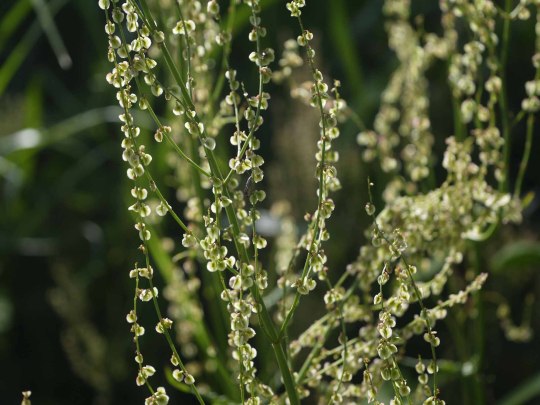

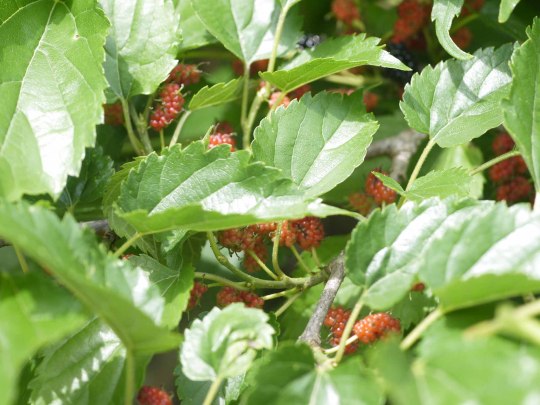

陽の長いころの里山(4) Rumex acetosa (fruits), Euonymus alatus f. striatus (flowers), Morus australis (fruits), Lemna aoukikusa (small leaves) and Potamogeton distinctus (elongate leaves) スイバの実/コマユミ/ヤマグワの実/アオウキクサ・ヒルムシロ
#nature#wildflowers#summer solstice approaching#june#niigata#japan#original photography on tumblr#photographers on tumblr#smc macro takumar 50mm/f4#rumex acetosa#euonymus alatus f. striatus#morus australis#lemna aoukikusa#potamogeton distinctus#スイバ#コマユミ#ヤマグワ#桑の実#アオウキクサ#ヒルムシロ
15 notes
·
View notes
Photo

Wednesday, April 28, 2021
12 notes
·
View notes
Photo
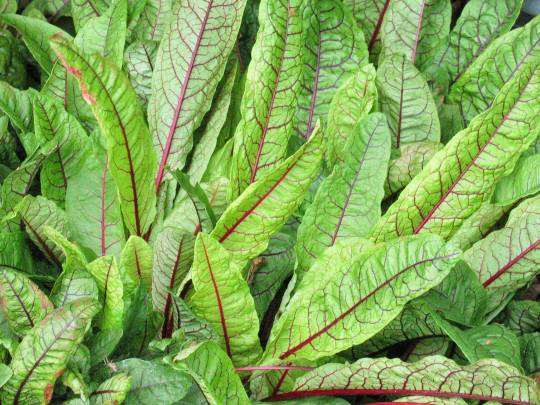
Rare Bloody Dock Red Sorrel Seeds Heirloom Non-GMO BN50 Bloody Dock Red Sorrel (Rumex sanguineus). Stunning foliage plant with elongated, medium green leaves, exquisitely veined in a brilliant burgundy-purple. A hardy perennial, it quickly forms an attractive clump, which sends up red flower clusters in early summer, followed by brown seed heads. A superb, deer-resistant accent plant. Count: 50+ 6-12 hours of Sun Sprouts in 10-14 Days Ideal Temperature: 65-75 Degrees F Seed Depth: 1/4" Plant Spacing: 10-12" Frost Hardy: Yes Type: Annuals, Perennials Sun Exposure: Full Sun Water: Regular Water Family: Polygonaceae Type: Annuals, Perennials Sun Exposure: Full Sun Water: Regular Water Planting Zones: 4-11 Family: Polygonaceae Rumex sanguineus (Red) Sorrel is grown for their edible leaves, which can be used raw in salads or cooked in soups, sauces, egg dishes. The flavor is like that of sharp, sprightly spinach, but sorrel is more heat tolerant and produces throughout the growing season. Common sorrel (Rumex acetosa) is a larger plant (to 3 feet tall), with leaves 6 inches long, many shaped like elongated arrowheads. It is native to northern climates. French sorrel (R. scutatus) is a more sprawling plant, to 112 feet high, with shorter, broader leaves and a milder, more lemony flavor than R. acetosa. Native to Europe, western Asia, and North Africa. The oxalic acid found in sorrel can replace lemon, which is often added to smoothies to balance out the taste. Grow sorrel in reasonably good soil. Sow seeds in early spring; thin seedlings to 8 inches apart. Or set out transplants at any time, spacing them 8 inches apart. Pick tender leaves when they are big enough to use; cut out flowering stems to encourage leaf production. Replace (or dig and divide) plants after 3 or 4 years. The plant grows to about 2 feet in height in clumps with pink flowers in racemose appearing during early summer. Growing Tips: Harvest tender leaves starting in early spring, remove flowering tops to keep leaves tender and to prevent unwanted volunteers. May become invasive in some climates. Like any other greens, wash sorrel clumps thoroughly in clean running water and rinse in salt water for about 30 minutes in order to remove dirt and any insecticide residues. The fresh herb should be used early to get maximum nutrition. To store, keep wrapped in a damp towel and place in the refrigerator for extended use (up to 3 days). Sorrel uses – Add to soups – Make it into a sauce for fish – Add to omelets and scrambled eggs – Add to stuffing for meat – Shred sorrel and stuff it into fish – Add to quiches – Add to mashed potatoes – Add to hummus – Add to pasta – Add to mixed-leaf and herb salads – Add to chard and spinach anywhere you would use those – Use as a filling for buckwheat crêpes – Make it into a pesto, to use in pasta, on pizzas, or with grilled salmon – Sorrel Smoothie Note: No tracking # will be provided to make the shipping cost-effective for us and free for you. Returns & exchanges Not accepted. But please contact me if you have problems with your order Our seeds are guaranteed to germinate. Once the seeds have sprouted, please understand that we cannot be held responsible for the many uncontrollable growing and climatic conditions that must be met to ensure the success of your crop(s). I try my best to make my buyers happy and would appreciate it if you'd contact me first if you have any questions or problems with your order. If you open a case before contacting me first, I will automatically block you from future purchases. Thank you for your understanding. http://springsofeden.myshopify.com/products/rare-bloody-dock-red-sorrel-seeds-heirloom-non-gmo-bn50-1
#Bloody Dock Sorrel#Red Sorrel#sorrel seeds#herb seeds#Rumex sanguineus#Rumex acetosa#R scutatus#French sorrel#green sorrel#common sorrel#Polygonaceae#organic seeds#Heirloom seeds
0 notes
Video
Double smurfed by Pascal Volk
#Graffiti#Street Art#urban art#grafito#smurf#Schlumpf#Pitufo#Wiesen-Sauerampfer#Rumex acetosa#Sorrel#Mehrfachbelichtung#Multiple exposure#Esposizione multipla#Exposición múltiple#Doppelbelichtung#double exposure#sobreimpresión#Wide Angle#Weitwinkel#gran angular#wa#ww#Sommer#Summer#Verano#Canon EOS R#Canon RF 35mm f/1.8 IS Macro STM#35mm#DxO PhotoLab#flickr
0 notes